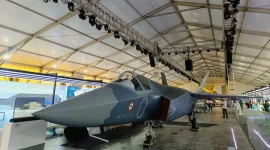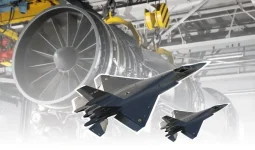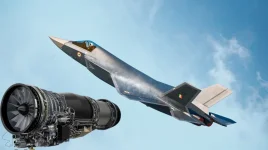- Views: 2K
- Replies: 20
India's flagship fifth-generation fighter jet program is approaching a decisive moment, as the agency leading its development is set to choose a manufacturing partner by the end of the year.
Dr. Samir V. Kamat, Chief of the Defence Research and Development Organisation (DRDO), announced in June 2025 that the Aeronautical Development Agency (ADA) will finalize the production lead for the Advanced Medium Combat Aircraft (AMCA) within the next six months.
This selection is a critical step for the ambitious ₹15,000 crore project, which aims to bolster India's air power and advance its goal of self-reliance in high-tech military hardware.
The decision comes amid heightened regional security concerns, particularly with China's deployment of J-20 stealth fighters and its plans to supply advanced J-35 jets to Pakistan.
The choice of partner will be made through a competitive public-private partnership model, a move that has intensified discussion about the future roles of the state-owned Hindustan Aeronautics Limited (HAL) and leading private industrial firms.
A key motivation behind involving the private sector is to leverage its efficiency and prevent a repeat of the significant delays that have affected past indigenous defence projects, such as the Tejas Light Combat Aircraft.
In May 2025, India's Defence Minister Rajnath Singh approved a new "industry partnership model." This departs from the traditional approach of automatically assigning such projects to HAL and instead opens the door for private companies to lead the production, either independently or in a consortium.
This policy shift was influenced by the ADA's desire for a more streamlined and timely execution of the AMCA program.
The state-owned aerospace major HAL, which has extensive experience from producing the Tejas fighter and contributing to the AMCA's structural design, has positioned itself as a primary contender. The company has proposed leading a consortium and has already received 24 partnership proposals from private firms.
However, concerns exist regarding HAL's capacity to meet the demanding AMCA schedule, as it is currently committed to manufacturing a large number of Tejas Mk-1A and developing the Mk-2 variants for the Indian Air Force.
The AMCA is engineered to be a 25-tonne, twin-engine, all-weather multirole combat aircraft. As a fifth-generation fighter, it incorporates advanced features like a low radar profile (stealth), the ability to fly at supersonic speeds without afterburners (supercruise), and sophisticated electronics for missions ranging from air-to-air combat to ground strikes and suppression of enemy air defences.
The aircraft is slated to eventually replace the Sukhoi Su-30 MKI as the primary fighter in the IAF's fleet. The project will be executed in two stages: the AMCA Mark-1, which will use the American General Electric F414 engine, followed by the Mark-2, which will feature a more powerful engine co-developed with French manufacturer Safran.
The program received a major boost in March 2024 when the Cabinet Committee on Security sanctioned ₹15,000 crore for the design and development of five prototypes.
Following the completion of its Critical Design Review, a detailed timeline was presented at Aero India 2025. The roadmap aims for the first prototype to be rolled out by 2026-27, with its maiden flight scheduled for 2028.
Following a certification period, the AMCA is planned for induction into the armed forces by 2034, with full-scale production beginning a year later, placing India in a select group of nations capable of producing their own fifth-generation stealth fighters.




